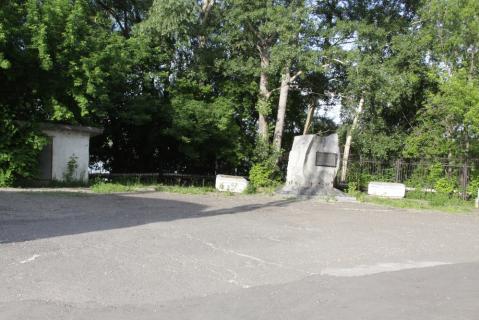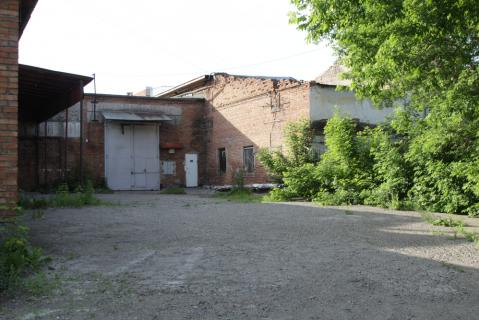During building work in early 1990 burials of those shot during the Great Terror (1937-1938) were discovered in the courtyard of the former Altai Krai NKVD building at 2 Kirov Street by plant operator Vladimir Bulakh.
Oral testimony about executions and burials in this location had long been in circulation. After an appeal by the Biisk Memorial Society the prosecutor’s office opened an investigation. The uncovering of the burials began on 22 May 1990 in one corner of the courtyard and continued for three days. The work was supervised by the regional Internal Affairs department; the digging was carried out by soldiers and a forensic expert in pathological anatomy was present all the time. The remains of 68 individuals were raised from a pit three metres deep. There were two bullet holes in the back of each skull, the second being the “insurance” shot. The shootings are thought to have taken place in 1937-1938.
The work was brought to a halt following complaints from neighbours that cracks were appearing in their building since the excavation was close to its foundation. Part of the remains, therefore, were not exhumed. Items found during the excavation (fragments of shoes, spectacles and buttons) were passed to the V.V. Bianchi regional museum. The remains were reburied on 30 October 1990 at the Voznesenskoe cemetery [22-06] with the support of the city’s Memorial society. A wooden cross was erected that day and a monument was added in 1994.
In 1991 a granite memorial was placed where the remains were found with the following text on an attached plaque: “This stone is in memory of the innocent victims of the totalitarian regime, shot here in the courtyard of the NKVD building. We vow never to forget”. In 2012 the memorial was moved to the recently completed chapel of Russia’s New Martyrs and Confessors on Dinamovskaya St, built in memory of the victims of repression.
The memorial is protected as a site of cultural heritage at the regional level.
Solemn ceremonies are held on 30 October each year, Remembrance Day for the Victims of Political Repression, first in the courtyard of the building at 2 Kirov Street and then at the Voznesenskoe cemetery. A mass for the dead is performed at the Stone of Sorrow.
Victims of Political Repression in the Altai Krai (7 vols. 1998-2005) includes biographical entries on 46,200 individuals who were shot or sent to the camps between 1919 and 1965.
The 2025 Memorial database lists 46,525 victims in the Altai Region (Krai; BR 45,668).
15,028 were shot, most during the Great Terror (12,509). Charges were dropped in 3,219 cases, 194 having died in custody. Мore than 24,000 were sent to the camps, where 425 died; about 2,400 were deported, including the families of over seven hundred men shot or sent to the camps.
In addition, the database includes 857 names from police records with very little information.
(“Dekulakised” forced settlers from the Altai Region were very numerous, 47,184, in the Tomsk Region.)
| Date | Nature of ceremonies | Organiser or responsible person | Participants | Frequency |
|---|---|---|---|---|
|
30 October
|
Remembrance Day for the Victims of Political Repression
|
Biisk City department for public relations
|
Public, clergy
|
Annual event
|
| State of burials | Area | Boundaries |
|---|---|---|
|
have not survived
|
not established
|
Within the confines of the courtyard
|
[ original texts and hyperlinks ]
“Places of unbearable suffering”, in V.L. Sosnovsky, Notes, Biisk, 2002 (203 pp)
“Burials in the former NKVD courtyard of those executed in Biisk”, Virtual Museum of the Gulag [retrieved, 27 May 2022; no longer accessible]
*
Reply No 972/01-15 (dated 18 March 2014) of the Biisk City Administration to a formal enquiry from RIC Memorial (St Petersburg)



